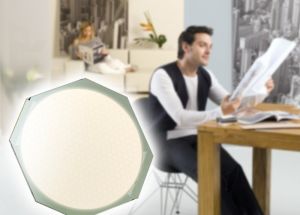Intel shows an Atom-based home-automation concept with an 11" OLED display
Intel is showing a new home-automation system concept, that is based on their Atom processor, and has a large (11") touch AMOLED display. The whole system is designed to be efficient, hence the Atom processor and OLED display. Intel's site is not consistent about the display size, in one place they say it's 11.25", and in another 11.56". In any case we're not sure who's making the actual OLED but it's probably based on a Sony panel as used in the XEL-1 OLED TV.

In any case, the concept is very nice, and looks great. It uses Zigbee wireless connection to connect to appliances around the home and provide "intelligent home energy management". Each appliance needs to be connected to a low-cost Zigbee transmitted socket in order for this to work. The OLED-based display provides a central control panel with information such as temperature, utility cost, personal messages, home security, a clock, weather, internet access, etc.








